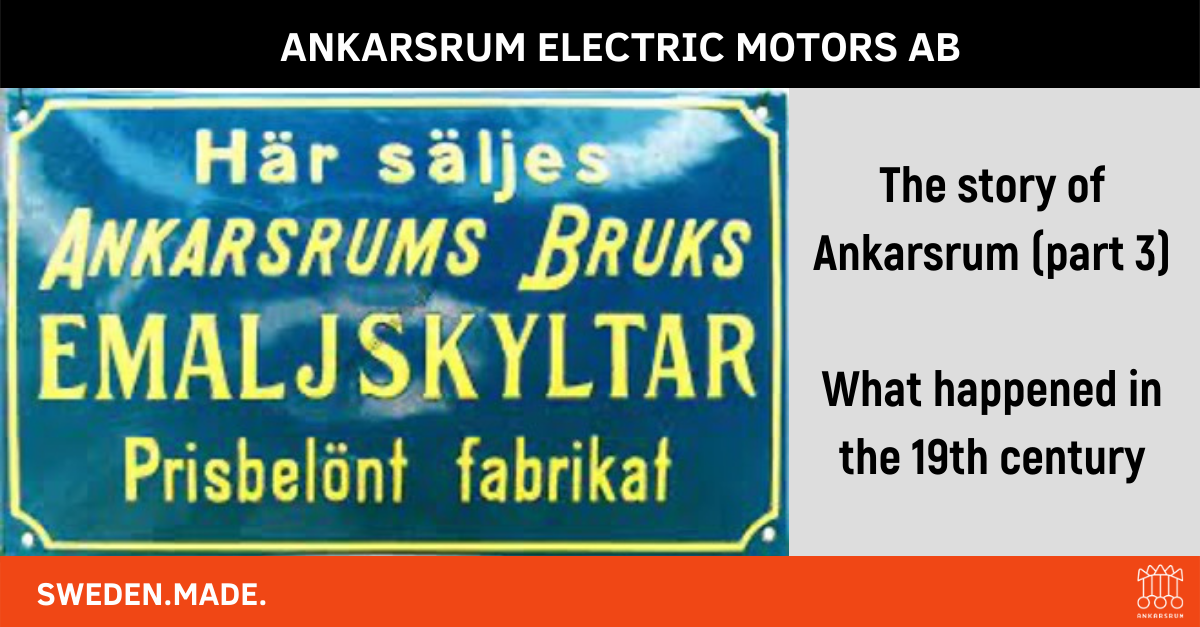At the beginning of the 19th century, a period of rapid development of ”Bruket” began. Anders Baltzar de Maré built dams and blast furnace building in 1828 at what came to be known as ”Nedre Bruket”, where the factory still stands today. One of the largest foundries in the county was completed in 1840.
In the middle of the century, Anders son took over and” Bruket” went into a strong development phase. At the ”Övre Bruket” were added rolling mills, well furnaces with gas generators, blowers and martin plants where scrap iron was refused. The workforce grew to 300 from having previously been 50. There were new methods that used coal, then Swedish ironworks did not keep up with the competition. The so-called mill death occurred, and in Ankarsrum they invested in manufacturing. For some years,”Brukets” foundry was the largest in Sweden in terms of weight. Track crossings for railways, air circulation heaters for churches and projectiles for war were main products. ”Bruket” was for many years the sole supplier to the Swedish navy.
The Nordic region´s first and later the Nordic region´s largest enamel sign production was part of ”Bruket” during this time. There are many collectors around the world who have and would like to get hold of signs that were made here.
The construction of atherailway would be of great importance for the development of ”Bruket”. First, the section Ankarsrum-Verkebäck was completed and in 1879 the entire section Västervik-Hultsfred was finalised. Now one could transport coal from Åtvidaberg which was needed for production. Both ”Övre och Nedre Bruket” were running at the same time and the plants needed 54,000 cubics meters of coal in one year.
King Oscar II liked to travel by train and he orchestrated the opening ceremony of the railway in 1880 and visited Alfred de Mare´at the Manor. Ten years later, the king returned for another visit.



